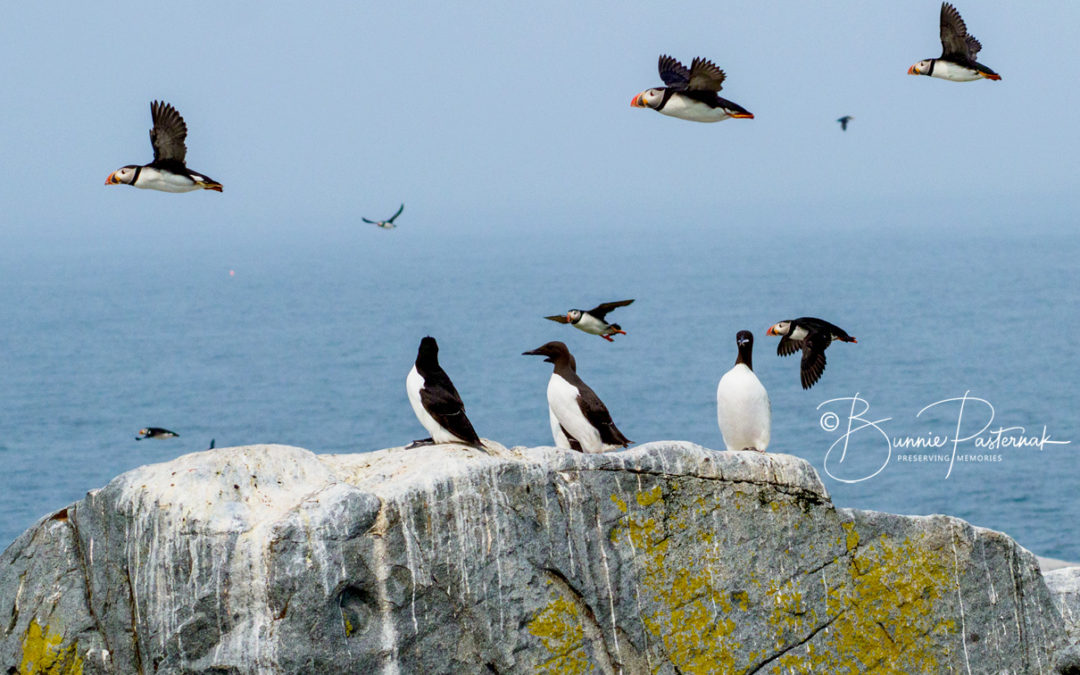
by Bunnie Pasternak | Aug 8, 2021 | Uncategorized
Every year, there are thousands of returning Atlantic Puffins from the sea that roost on a variety of islands off the Atlantic Coast of Maine and nearby Canada. This year was no different and a Hunt’s Photo and Video, week-long Photo Adventure with Don Toothaker and Mark Buckler to the “Bold Coast,” allowed my second, successful visit to watch them up close on Machias Seal Island. What an opportunity to listen to them talk to each other, to hear them pitter-patter across the top of the blind that I and others shared for what felt like only a nano second from the time entering the building. It also was fun watching them doing all kinds of acrobatics – both in the air and on their chosen landing locations amongst the cliffs and rocks of the island. But the best of all was watching the Puffins preening, they were hilarious and true contortionists at their best. Hope you enjoy the images and at some point in the future — I wish you well in being able to see the Puffins yourself and preserving memories of your own. [Be sure to remember to double click on images to enlarge them.]
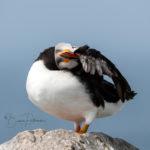
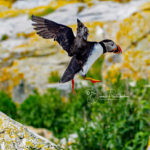
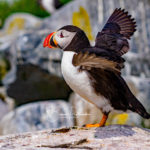
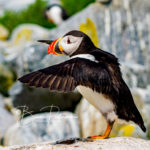
by Bunnie Pasternak | May 23, 2021 | Uncategorized
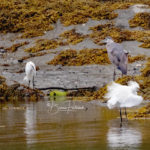
Mill Cove in Maine and many more along the coast are inviting locations for the congregation of all sorts of birds — large and small. I’ve seen Bald Eagles, Osprey, and Hawks, along with a variety of songbirds and ducks in or near the Cove for years.
Recently, I spent some time watching the interaction of a Blue Heron and five (5) Egrets vying for some food in a retreating tide. The scene reminded me some of the old “Saturday-Night Rumbles” on TV, when fighters would check each other out and then, would eventually start to physically engage in fisticuffs. Surprisingly, the Heron and the Egrets were no different, despite their size differences. Blue Herons can be up to 4.5′ tall with up to 5-6′ wingspans. Egrets come in a variety of sizes, but the ones I saw appear to have been Snowy Egrets, which can get to 2.5’ tall with 3′ wingspans.
Herons generally fish alone, and this Heron had been stoically standing on the shore watching the receding waters for food to eat. There were some Egrets in the area, while others started flying in to also hunt for food. The interactions between the Heron and Egrets were fascinating. One by one the Egrets, walked back and forth past the Heron, getting closer and closer to the Heron’s fishing spot while checking out the opportunities.
As time went on, the Heron became more and more agitated by the Egrets’ movement. At one point in a flash, the Heron decided enough was enough and took off after one of the smaller Egrets. Can you just imagine this huge, gangly bird swoop up at you in what seemed like a nano-second, readying to pounce? The little Egret took off in a hurry to escape. It was close, but he got away and the Heron settled in again. It worked for awhile, but of course truces are often temporary and the cycle began again. . . .
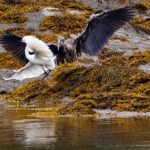
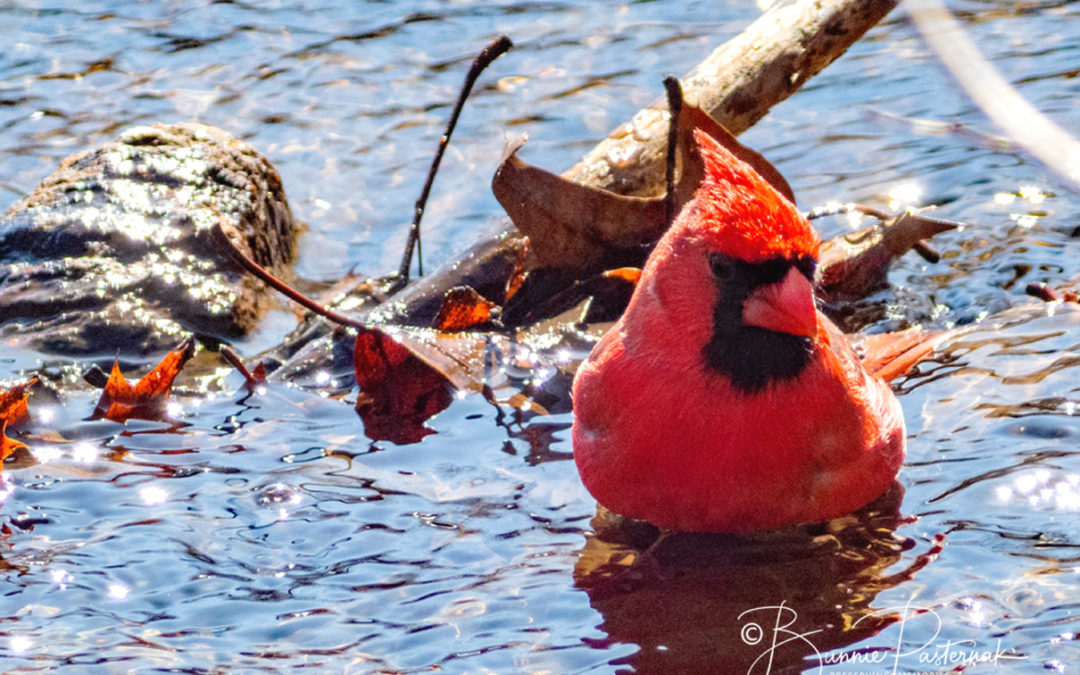
by Bunnie Pasternak | Mar 31, 2021 | Uncategorized
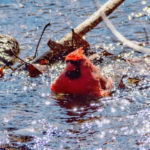
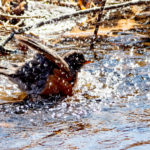
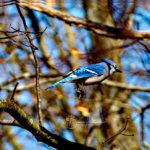
When New Englanders see temperatures starting to break the 30s and 40s with the sun out, they think it’s time to get out and enjoy the weather. So that is what I did recently at Horn Pond, in Woburn, MA. The last time I was at Horn Pond, I was on a photo walk with a Hunt’s Photo Education group in February. It was chilly with icy trails every where, but absolutely fabulous for the song birds, ducks and swans which were taking advantage of some open water running out of the Pond into a brook. More recently, Horn Pond is a different place altogether. It’s more Spring-like, people are everywhere getting out and enjoying the day early, walking the now muddy trails with their families and friends, and exchanging pleasantries with one another for probably the first time in months of being cooped up inside for not only the weather, but also the affects of the pandemic.
In my case, a new lens has brought new excitement to practice some new techniques and work toward getting birds in flight by using my camera’s capabilities I haven’t used that much in the past. So this visit, I practiced capturing birds in flight using Olympus’s “Pro-Capture” settings, along with my usual multiple exposure settings. The ones I am most happy with on this trip are the Bluejay in the tree, readying to take flight and in flight. In addition, I found a brook running into the Pond, where there were some Cardinals and Robins swimming in the water giving their feathers a well-needed, Spring bath.
By taking some time to slow down, dressing for the day’s temperatures, and getting out on some local trails, I was able to capture some unexpected images this trip. So I recommend taking the the time to get out to some new place, look up, look down, and see what you can find. There’s really a lot going on before your eyes to enjoy and there are certainly plenty of locations to visit and enjoy right near you.
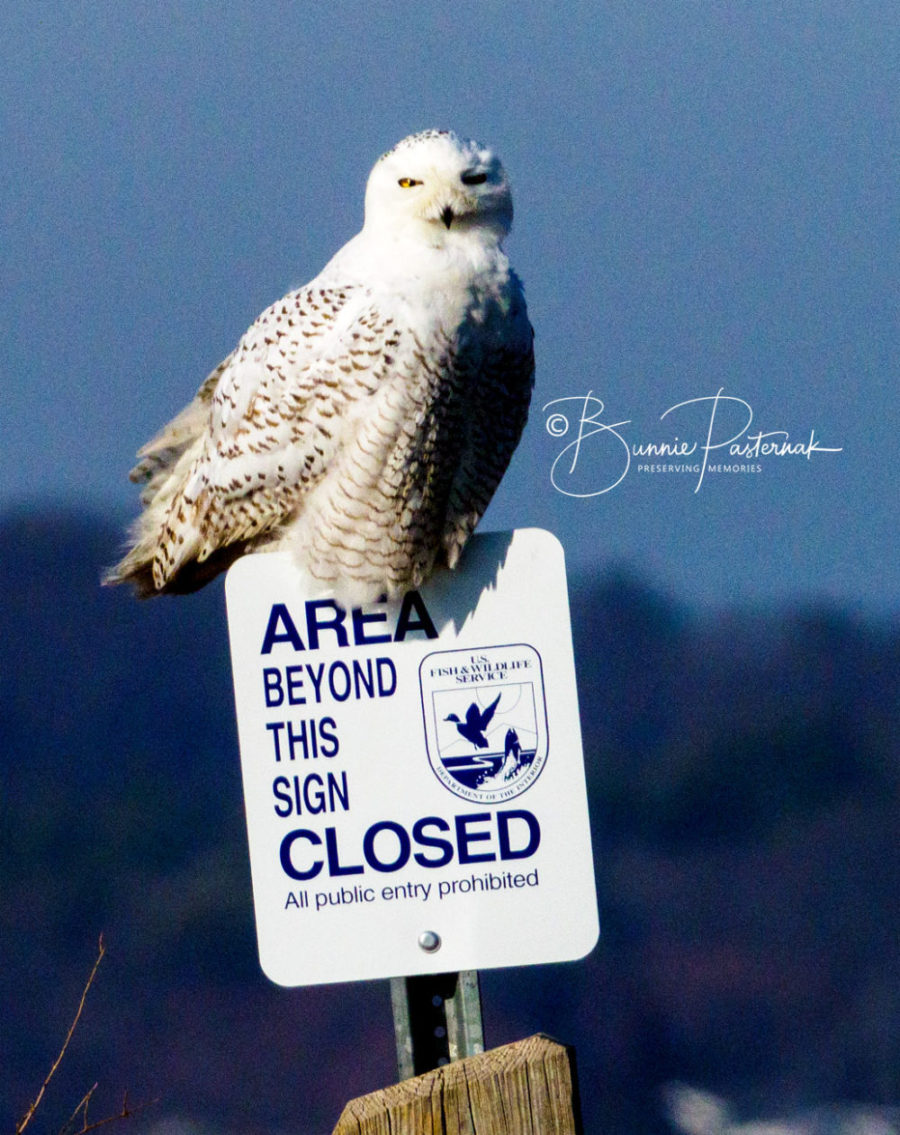
by Bunnie Pasternak | Feb 22, 2021 | Uncategorized
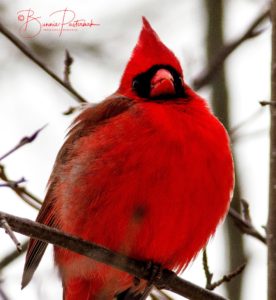
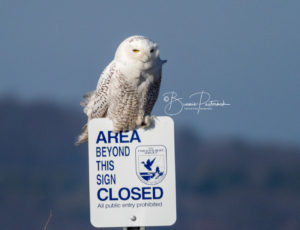

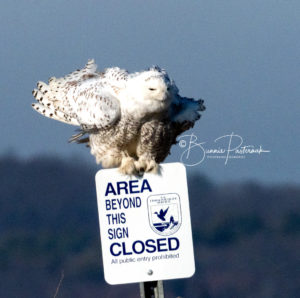
I recently came across a short article by Asher Elbein from Audubon’s Spring 2020 magazine (page 53, “Catch a Floof if You Can”) talking about lingo that has been popping up on the Internet for “cute bird photos.” After all, having cute bird photos should also be out there with all those “cute puppies,” “cute cats,” etc., etc. Interestingly, the new lingo making the rounds according to Elbein includes ” ‘birb’ for small, round, cute birds; ‘borb’ for those especially round; and ‘floof’ for a bird that is fluffed up.” Amazingly, you probably can find all forms right in your own backyard. Who knew there was such lingo to express what you were seeing all these years???
For instance, do you have a birdbath for the birds in your yard? I know it’s winter right now in New England, but birds still need fresh water, just like you and I do. The next time you see them trying to take a bath, splashing water everywhere — what do they look like after they’re done? A “birb,” a “borb”, or a “floof”? Some of them are definitely poofing or floofing up to dry out afterwards or even to stay warm. I saw a local Northern Cardinal all poofed up on a walk in Woburn a couple of weeks ago that caught me by surprise. Wow — my first recognized “borb” perhaps or was it really “floofing”? I’ll let you decide.
But, preening and poofing or even “floofing” happens for birds of all sizes. I recently was able to capture a Snowy Owl floofing, unknowingly, until I read the article. I just thought she was relaxing after preening and seemed pretty comfortable sitting on a sign post. While letting everyone know that where she was, no one should get any closer. And, if anyone moved, she gave them the evil, yellow eye that would stare the person down and they’d stopped moving. Afterward, her preening and “floofing” just went right on. What an opportunity to see this Arctic visitor right here in our own backyards. Let’s keep her and all her brethren safe, by giving all birds the needed space to protect them from harm and harassment of humans. And above all, given the opportunity, preserve those memories you create and share them. Enjoy!

















Recent Comments